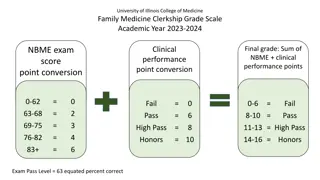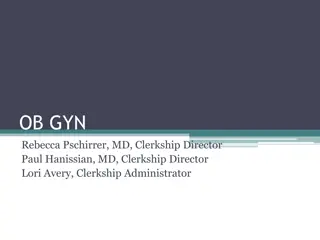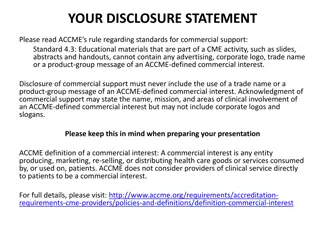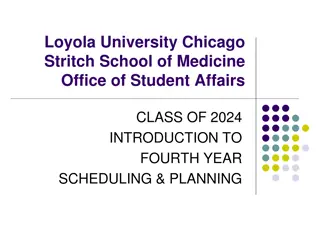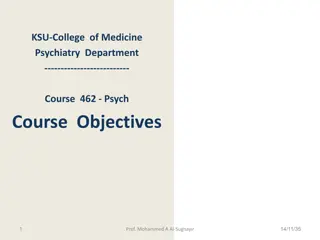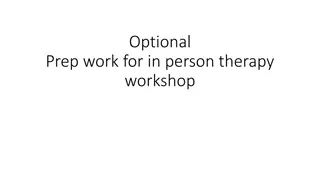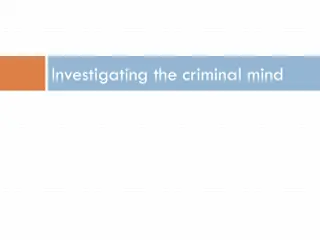Psychiatry Clerkship Jeopardy: Test Your Knowledge in Antipsychotics
Dive into the world of psychiatry with this engaging Jeopardy game tailored for the Psychiatry Clerkship. Test your knowledge on typical and atypical antipsychotics, their side effects, mechanisms of action, and more. Challenge yourself with questions ranging from drug identification to treatment applications. Sharpen your skills in a fun and interactive way!
Download Presentation

Please find below an Image/Link to download the presentation.
The content on the website is provided AS IS for your information and personal use only. It may not be sold, licensed, or shared on other websites without obtaining consent from the author. Download presentation by click this link. If you encounter any issues during the download, it is possible that the publisher has removed the file from their server.
E N D
Presentation Transcript
Jeopardy Jeopardy for the Psychiatry Clerkship
And Now Here Is The Host . . . is proud to present Insert Name Here
The categories for todays Jeopardy will be:
Typical Antipsychotics
Atypical Antipsychotics
Mechanism of Action
Typicals Miscellaneous Atypicals Side Effects Mechanism of action 100 100 100 100 100 200 200 200 200 200 300 300 300 300 300 400 400 400 400 400 500 500 500 500 500 600 600 600 600 600 700 700 700 700 700 800 800 800 800 800 900 900 900 900 900
What is chlorpromazine (Thorazine)? Not only was this drug the first antipsychotic, it was the first psychotropic medication of any kind Row 1, Col 1
What are high potency & low potency? Typical antipsychotics are divided into these two categories which also correlates to their D2receptor s binding affinity 1,2
What is haloperidol (Haldol)? This typical antipsychotic is available PO, IM, & IV; is commonly used to treat agitated patients in hospitals/ER s; & can be used to treat Tourette s syndroms 1,3
What is diphenhydramine (Benadryl)? Three anticholinergic medications commonly used to counter EPS side effects are: trihexyphenidyl (artane), benztropine (cogentin), & this medication 1,4
What are haloperidol (Haldol) & fluphenazine (Prolixin)? When used in their long acting injectable form, these 2 FGA s are given IM every 2-4 weeks to treat patients with chronic schizophrenia 1,5
What is low potency antipsychotic? Chlorpromazine (thorazine) This type of typical antipsychotic is anti-cholinergic, anti-histaminic, & an 1 adrenergic antagonist 1,6
What is antiemetic properties? While prochlorperazine (Compazine) is a D2 blocker it is more commonly used for this than its antipsychotic properties 1,7
What is chlorpromazine (Thorazine)? This antipsychotic can also be used to treat intractable hiccups 1,8
What is thioridazine (Mellaril)? This typical antipsychotic has the greatest risk of any antipsychotic for dose dependent QTc prolongation, torsades de pointes, and cardiotoxicity 1,9
What is Clozapine (Clozaril)? Even though its the most efficacious antipsychotic, its side effect profile prevents this drug from consideration for first line use 2,1
What is quetiapine (Seroquel)? This atypical is used to treat psychosis in Lewy Body Dementia & Parkinson s Disease due to its low likelihood of EPS 2,2
What is risperidone (Risperdal) & paliperidone (Invega) These 2 atypicals are available in a long acting injectable form & have the highest risk among atypicals of causing prolactin elevation 2,3
What is olanzapine (Zyprexa) and clozapine (Clozaril)? These two atypicals are most likely to cause side effects of significant sedation and the metabolic syndrome 2,4
What is ziprasidone (Geodon)? Of all the SGA s, this medication has the highest risk of causing QTc prolongation 2,5
What is aripiprazole (Abilify)? This SGA is a partial dopamine agonist & commonly has the side effect akathisia 2,6
What is aripiprazole (Abilify)? This atypical is FDA approved for adjunct treatment of major depression 2,7
What is clozapine (Clozaril?)? Due to the risk of seizure induction, slow dose titration must be done for this atypical 2,8
What are ziprasidone (geodone) & aripiprazole (abilify)? Lurasidone (latuda), asenapine (saphris) & these two SGA s are the most metabolically neutral 2,9
What is Tardive Dyskinesia? More common with typical antipsychotics, this side effect is characterized by repetitive, involuntary, purposeless movements 3,1
What is abrupt stop? (abrupt stop rebound psychosis; do gradual taper when possible) Gradual taper ---------------------------------- For a patient taking Clozapine (Clozaril) this is done when the WBC is <2,000 or the absolute neutrophil count is <1,000 Abrupt stop 3,2
What is glucose & lipids? Due to the risk of metabolic syndrome, patients on atypicals should have their weight, waist circumference and these 2 labs monitored regularly 3,3
What is dystonia? The picture shows a pt experiencing this EPS side effect 3,4
What is1 adrenergic antagonism? undesirable in elderly pts & pts at risk for falls Clozapine (clozaril), Quetiapine (seroquel), Iloperidone (fanapt), Risperidone (risperdal) Paliperidone (invega) ------------------------------------------------ All may cause dose dependent orthostatic hypotension due to this 3,5
What is sudden death (cardiovascular cause?)? There is a blackbox warning for the use of antipsychotics in elderly dementia patients due to increased risk of this 3,6
What is oculogyric crisis? https://encrypted-tbn0.gstatic.com/images?q=tbn:ANd9GcR4wedhwZujBGMyrisURhc748ctGvGVhQNYgjoy4siAAcMuC4Fe The antipsychotic side effect seen in this patient is this 3,7
What is gynecomasitia? (From hyperprolactinemia) The picture shows a patient with this D2 blocking medication side effect 3,8
What is clozapine (Clozaril)? This atypical may cause dry mouth due to its anticholinergic properties, but ironically it may also cause excess salivation 3,9
What are the D2 & 5HT2A receptor? SGA s work primary by blocking these 2 receptors 4,1
What is the Mesolimbic Pathway? The positive symptoms of schizophrenia are due to hyperactivity of what dopamine tract? 4,2
What is the Tubuloinfundibular Pathway? Excess blockade of this dopamine tract may cause infertility, galactorrhea, & osteopenia. 4,3
What is act as a dopamine agonist? When switching to abilify, need to switch slowly or have a washout period When switching to aripiprazole (abilify) from a different antipsychotic, before the other antipsychotic has washed out, the aripiprazole (abilify) at least in theory initially does this at the D2 receptors 4,4
What is 60%? The percentage of D2 occupancy necessary for the antipsychotic effect is this 4,5
What is ~80%? This percentage of occupancy at D2 is believed to be associated with elevated prolactin and/or EPS 4,6
What is dopamine antagonism? While NMS is uncommon to rare (incident rate 0.02-3%), its cause is this 4,7
What is the mesocortical pathway? Hypoactivity of this dopamine tract is believed to be associated with the development of negative symptoms 4,8
What is aripiprazole (Abilify)? The SGA with the unique mechanism of action of partial dopamine agonism is this 4,9
What is all 4 of them? Prochlorperazine (Compazine) Metoclopramide (Reglan) Droperidol (Inapsine) Promethazine (Phenergan) This antiemetic medication(s) is/are a D2 blocker(s) and may cause EPS or TD 5,1
What is cigarette smoking? About 75% of pts with schizophrenia do this unhealthy activity which also induces an metabolic rate of antipsychotic medications 5,2
What is creatine kinase? While not diagnostic for NMS (it may be normal if there is not clearly well developed rigidity), this lab s degree of abnormality correlates with the disease severity & prognosis 5,3
What is quetiapine (Seroquel)? Antipsychotics approved for the treatment of bipolar depression are olanzapine/fluoxetine (symbyax), lurasidone (latuda), and this 5,4
What is paliperidone (Invega)? This atypical has a significant risk of causing hyperprolactinemia, a significant risk of sexual side effects, and is the active metabolite of risperidone (Risperdal) 5,5



